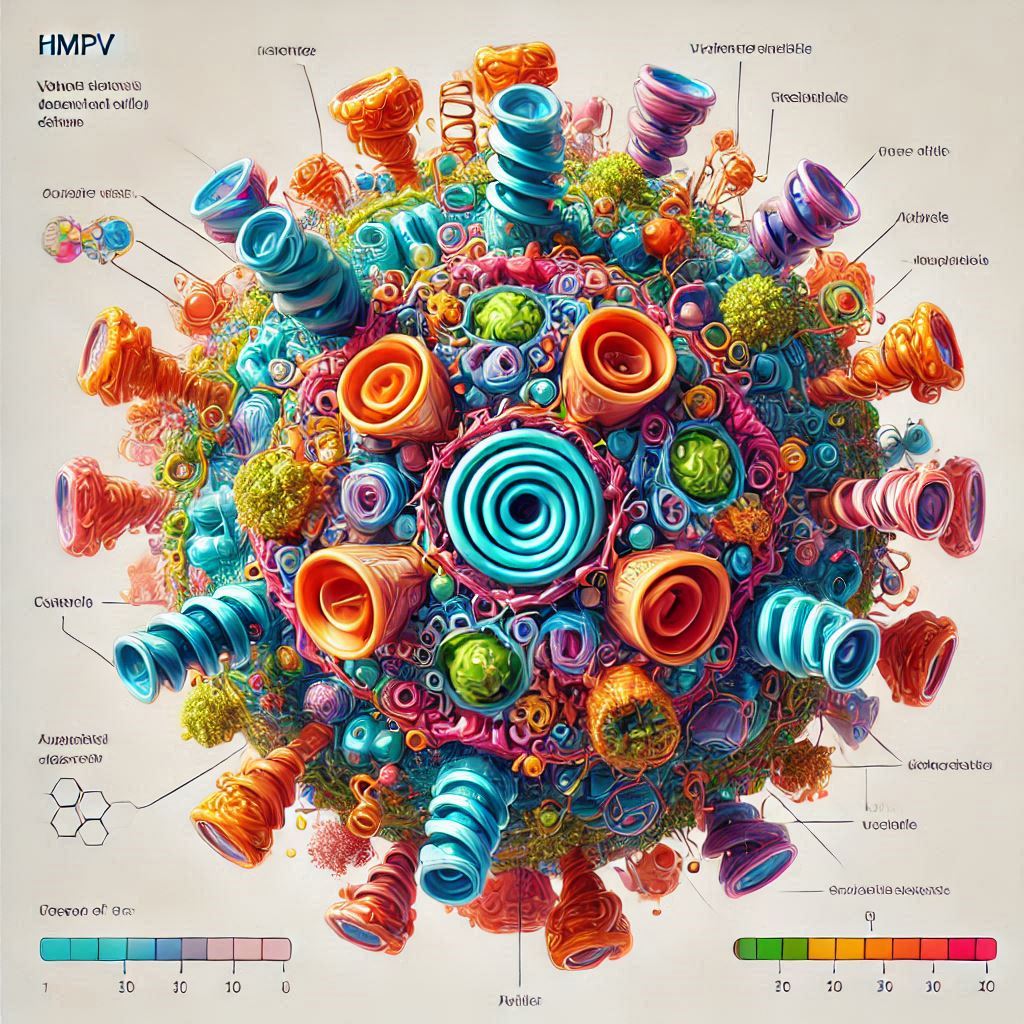The world continues to face challenges posed by emerging viral infections, and the Chinese Human Metapneumovirus (HMPV) has become a recent point of concern. This respiratory virus, known for causing infections primarily in children, the elderly, and immunocompromised individuals, has garnered attention due to recent outbreaks in China. In this post, we will explore everything you need to know about the HMPV virus, including its symptoms, causes, transmission, prevention, and global impact.
What is Human Metapneumovirus (HMPV)?
Human Metapneumovirus (HMPV) is a respiratory virus first identified in 2001. It belongs to the Paramyxoviridae family, which includes other respiratory pathogens like the Respiratory Syncytial Virus (RSV) and the parainfluenza viruses. HMPV is known to cause mild to severe respiratory illnesses, ranging from common cold-like symptoms to severe pneumonia and bronchiolitis. While the virus is not new, its recent outbreaks in China have highlighted its potential to disrupt public health systems.
Symptoms of HMPV Infection
The symptoms of HMPV infection vary in severity and can include:
Mild Symptoms:
Runny nose
Cough
Sore throat
Fever
Severe Symptoms:
Wheezing
Shortness of breath
Bronchiolitis
Pneumonia
Young children, elderly individuals, and people with compromised immune systems are more likely to experience severe symptoms.
How is HMPV Spread?
HMPV spreads through respiratory droplets, making it highly contagious. The primary modes of transmission include:
Close Contact: Direct interaction with an infected person, such as shaking hands or hugging.
Respiratory Droplets: Coughing, sneezing, or talking can release droplets carrying the virus.
Contaminated Surfaces: Touching surfaces contaminated with the virus and then touching the face, especially the nose, mouth, or eyes.
Recent Outbreaks or Research (Specific to China)
In recent years, China has reported a noticeable increase in cases of HMPV, particularly during the winter months. Studies conducted by Chinese researchers indicate:
A significant rise in hospital admissions due to respiratory illnesses caused by HMPV.
Increased infection rates among children under the age of five.
The role of urban density and seasonal patterns in amplifying the spread of the virus.
These findings underscore the need for enhanced surveillance and public awareness.
Diagnosis and Treatment
Diagnosis:
HMPV infections are diagnosed using the following methods:
PCR Tests: Highly sensitive tests that detect viral RNA.
Viral Cultures: Growing the virus in a laboratory setting for confirmation.
Serology Tests: Detecting antibodies against the virus in the blood.
Treatment:
Currently, there is no specific antiviral treatment for HMPV. Management focuses on relieving symptoms, including:
Over-the-counter medications for fever and pain relief.
Hydration and rest.
Oxygen therapy in severe cases.
Prevention Measures
Preventing the spread of HMPV involves practical and effective measures, including:
Hygiene Practices: Regular handwashing with soap and water.
Mask Usage: Wearing masks in crowded or high-risk areas.
Surface Disinfection: Cleaning frequently touched surfaces regularly.
Avoid Close Contact: Keeping a safe distance from infected individuals.
Vaccination Research: Although vaccines are not yet available, ongoing research holds promise.
Global Implications and Awareness
The rise in HMPV cases in China has drawn global attention due to its potential impact on public health. Key concerns include:
Strain on Healthcare Systems: Increased hospital admissions can overwhelm medical facilities.
Economic Impact: Outbreaks may disrupt workforces and economic stability.
Need for Research: More studies are required to develop vaccines and treatments.
Causes, Effects, and Precautions
Causes:
Direct contact with an infected person or contaminated surfaces.
Seasonal factors, such as colder temperatures.
High population density and close living conditions.
Effects:
Increased respiratory illnesses, especially in vulnerable populations.
Higher healthcare costs and resource utilization.
Potential for secondary bacterial infections in severe cases.
Precautions:
Maintain good hygiene.
Educate communities about the symptoms and risks.
Implement widespread testing and isolation measures during outbreaks.
The Chinese HMPV virus is a stark reminder of the ongoing challenges posed by respiratory pathogens. By understanding its transmission, symptoms, and prevention methods, we can minimize its impact. Governments, healthcare providers, and individuals must collaborate to address this emerging threat and ensure the safety of vulnerable populations.
Stay informed, take precautions, and prioritize public health to combat the HMPV virus effectively.

61 comments